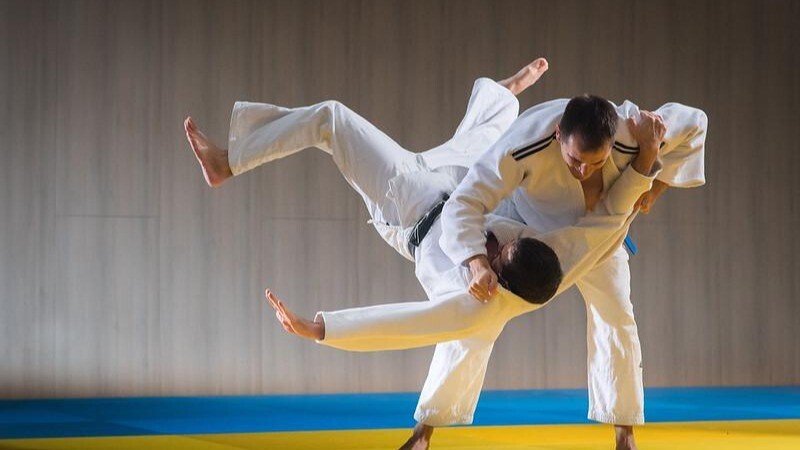Tom Matthews
In the world of negotiation, many view the process as a sumo match—a contest of strength where two opponents collide, each trying to impose their will, and push the other out of the ring. The more forceful party wins.
However, the most successful negotiators understand that negotiation is less about brute strength and more about finesse, balance, and adaptability. In essence, effective negotiation is more like judo.
Judo vs. sumo: a metaphor for negotiation styles
Sumo wrestling, with its focus on power and domination, is often compared to competitive, zero-sum negotiation. In this approach, negotiators see each deal as a finite pie—what one side gains, the other must lose. The result? Aggressive tactics, posturing, and sometimes even broken relationships. This is the traditional “win-lose” mentality, where the goal is to overpower the other party at all costs, and claim as much territory as possible.
In contrast, judo is a martial art that emphasises using your opponent’s energy to your advantage, redirecting force rather than resisting it. It’s a tactical sport built on balance, leverage, and flexibility. In negotiation, a “judo” approach focuses on collaboration, creativity, and finding mutually beneficial solutions. Instead of pushing against the other party, you work with them, using their needs and momentum to create a solution that benefits everyone—this is the “win-win” mindset, or “giving them what they want but on your terms”.
Why sumo fails in negotiation?
- Damaged relationships: a sumo-style negotiator might win the battle, but at what cost? Driving a hard bargain often leaves the other side feeling defeated, leading to resentment and damaged long-term relationships. This is particularly problematic in today’s interconnected world, where partnerships and networks are often more valuable than short-term victories
- Not reaching agreement: sumo-style negotiators try to impose their will and can get stuck in a rigid mindset, focusing solely on “winning” rather than exploring creative solutions that could expand the pie for both parties. By seeing the negotiation as a contest, agreement is often not reached and the deal can fall over
- Short-term gains, long-term losses: in sumo-style negotiations, the victor may secure immediate advantages, but this often comes at the expense of future cooperation. A partner who feels exploited is unlikely to return for future deals, leading to missed opportunities in the long run.
The power of judo in negotiation
- Collaboration over competition: a judo approach starts with the mindset that negotiation is not a battlefield but a problem-solving exercise. Both parties bring their own strengths, interests, and constraints, and the goal is to find common ground where everyone wins. By collaborating, you can often uncover solutions that neither party initially considered
- Leverage the other side’s needs: in judo, you use your opponent’s movements to your advantage. In negotiation, this translates to deeply understanding the other party’s interests and needs. Instead of viewing them as obstacles, you can turn those needs into opportunities. For example, if a client insists on a lower price, instead of simply rejecting the demand, consider what additional value you could offer that meets both your interests
- Adaptability and flexibility: just as a judo fighter remains agile and fluid, so too must a negotiator. Being willing to pivot, adjust your tactics, or rethink your position in light of new information is key to creating value. The most successful negotiators are those who can think on their feet and adjust their approach to suit the situation.
Strategies for practicing judo in negotiation
- Prepare for mutual gain: before entering any negotiation, spend time not only preparing your own goals but also considering the other party’s interests. Ask yourself: “What do they need?” “How can I align their interests with mine to create a win-win solution?” By focusing on mutual gain, you’re more likely to find points of agreement
- Listen actively: in a sumo-style negotiation, each side talks past the other, making demands and counter-demands. In a judo-style negotiation, the key is to listen. Pay attention not only to what is said but also to what is left unsaid. By understanding the motivations and concerns of the other party, you can better position yourself to find creative solutions
- Focus on interests, not positions: a position is the outcome someone demands (“I want a 10% discount”). An interest is the underlying need or motivation driving that position (“We have a tight budget this quarter”). By focusing on interests rather than positions, you can find ways to meet those underlying needs in ways that create value for both sides
- Use concessions wisely: in judo, giving ground isn’t a sign of weakness, but a tactical move. In negotiation, concessions are necessary, but they should be strategic; give to get. Trade items that are important to the other side (but maybe less important for you) in exchange for items that are important to you
- Build trust: trust is the foundation of a successful negotiation. By demonstrating goodwill, transparency, and reliability, you can encourage the other side to reciprocate. This helps foster an environment where both parties are more willing to collaborate and share information, which is crucial for creating win-win outcomes.
Conclusion
The art of negotiation is not about overpowering the other side but about understanding, adapting, and creating value together. By practicing judo rather than sumo, you position yourself as a strategic problem-solver, capable of building lasting relationships and discovering opportunities for mutual gain. In today’s interconnected and fast-paced world, this collaborative approach is more valuable than ever.
Next time you find yourself in a negotiation, remember: leverage, balance, and flexibility will take you further than brute force ever could.



